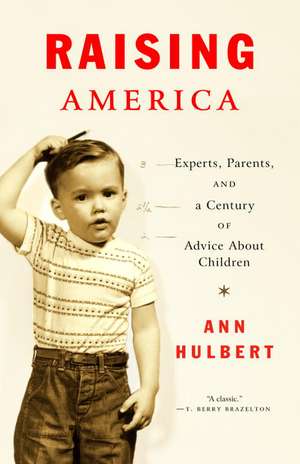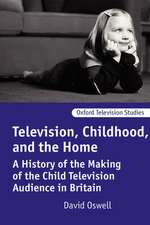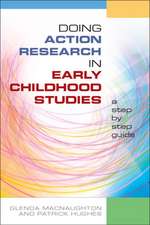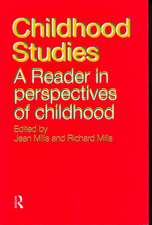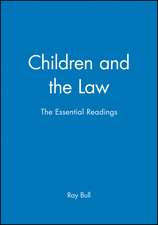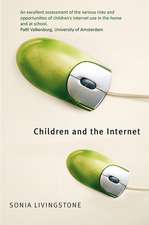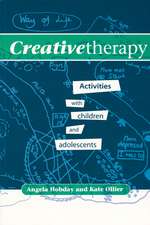Raising America: Experts, Parents, and a Century of Advice about Children
Autor Ann Hulberten Limba Engleză Paperback – 31 mar 2004
Preț: 164.54 lei
Nou
Puncte Express: 247
Preț estimativ în valută:
31.49€ • 32.96$ • 26.21£
31.49€ • 32.96$ • 26.21£
Carte tipărită la comandă
Livrare economică 27 martie-02 aprilie
Preluare comenzi: 021 569.72.76
Specificații
ISBN-13: 9780375701221
ISBN-10: 0375701222
Pagini: 464
Ilustrații: WITH 15 PHOTOGRAPHS
Dimensiuni: 133 x 203 x 25 mm
Greutate: 0.41 kg
Ediția:Vintage Books
Editura: Vintage Publishing
ISBN-10: 0375701222
Pagini: 464
Ilustrații: WITH 15 PHOTOGRAPHS
Dimensiuni: 133 x 203 x 25 mm
Greutate: 0.41 kg
Ediția:Vintage Books
Editura: Vintage Publishing
Recenzii
“Thought-provoking. . . . Hulbert’s achievement is to examine our hopes and fears as they are played out in the lives of our children.” —Los Angeles Times Book Review
“Were I to recommend one book to a new parent, it wouldn’t be a how-to manual, but rather Ann Hulbert’s diverting and thoroughly illuminating study.” –The New York Observer
“Raising America is a generation-by-generation history of advice, and the joy of this book is in how successfully Hulbert renders the taste and smell of the circus.” —The Atlantic Monthly
“[Hulbert’s] history is fascinating as it reflects the tensions and anxieties of a century.”—New York Times Book Review
“Were I to recommend one book to a new parent, it wouldn’t be a how-to manual, but rather Ann Hulbert’s diverting and thoroughly illuminating study.” –The New York Observer
“Raising America is a generation-by-generation history of advice, and the joy of this book is in how successfully Hulbert renders the taste and smell of the circus.” —The Atlantic Monthly
“[Hulbert’s] history is fascinating as it reflects the tensions and anxieties of a century.”—New York Times Book Review
Notă biografică
Ann Hulbert is the author of The Interior Castle: The Art and Life of Jean Stafford. Her articles and reviews have appeared in many places, including the New York Times Book Review, the New York Review of Books, and The New Republic, where she worked for many years as a senior editor. She graduated from Harvard and spent a year at Cambridge University. She lives with her husband and two children in Washington, D.C.
Extras
ONE
The Century of the Child
Blizzards are famously conducive to conceiving babies. During a huge snowstorm that blanketed the East Coast in mid-February of 1899, a particular group of American women and a few men certainly had babies on the brain. But they were not at home in their beds. The sturdiest among an anticipated gathering of two hundred or so were fighting their way to the third annual convention of the National Congress of Mothers, in Washington, D.C. Headed to the capital for four days of speeches and discussion about the latest enlightened principles of child nurture, the women delegates and the experts who had signed up for the event found the traveling rough. "Nearly all trolley lines had abandoned their trips . . . and livery men refused to send carriages out," it was reported later in the proceedings of the congress. "Hundreds of travelers were compelled to remain from twelve to twenty-four hours in ordinary passenger coaches without food or sleep."
The progressive-spirited mothers, educators, reformers, doctors, and others were the vigorous type, "young enough in years and mind to be affected by new movements," as one attendee put it. Still, some turned back. Those who finally arrived in Washington, full of "strange and wonderful stories . . . of their adventures," encountered a virtual state of nature. The city was threatened by a coal famine, because trains hadn't been running. Gas had given out, leaving many parts of the capital in darkness. "Food was also scarce, and the streets impassable," transformed into mere paths flanked by walls of snow ten to twelve feet high.
The primitive gloom made an ironic setting for a self-consciously modern gathering that aimed "to educate public opinion" about the opportunities that awaited in what was soon to be known as "the century of the child." In the vista of human improvement ahead, as a speaker at an earlier convention had described it, there was no hint of darkness: "It is childhood's teachableness that has enabled man to overcome heredity with history, to lift himself out of the shadowy regions of instinct into the bright realms of insight, to merge the struggle for existence into mutual coordination in the control of the environment. . . . The very meaning and mission of childhood is the continuous progress of humanity." The February storm mocked that faith in control of the environment. Rude nature had dramatically assumed the upper hand.
Yet for that very reason, snowbound Washington also made an ideal backdrop for the conference. Among the participants there was clearly an exhilarated sense that the elements had supplied them with an occasion to display their missionary mettle. In an up-to-date capital that had overnight become a frontier outpost, these respectable pioneers had a chance to prove themselves just the rugged apostles of improvement they aspired to be. The city at a standstill was a vivid reminder of all that they aimed to overcome: the pre-industrial hardships that had made the lives of wives, mothers, and children brutish and, all too often, short, and the efforts of doctors so unavailing. The snowstorm was also a stirring summons to the kind of old-fashioned hardiness that was threatened by the modern age of the city and the machine-a vigor the Congress of Mothers hoped to preserve or revive.
The conferees had strayed from "the fireside" where women belonged, as the upper-class urban leaders of the movement- Mrs. Adlai Stevenson was a vice president and the wealthy Phoebe Hearst, wife of the California senator George Hearst, was the major benefactress-were forever telling their middle-class following of mothers' club members and others. But their mission was domestic, even if they were not at home with their spouses helping to avert the prospect of "race suicide," as females of their sort were urged to do in fin-de-siècle America, when alarm about declining fertility ran high. They prided themselves on not being seduced by the effete "illusion of self-culture" that they worried was tempting women out of the house and into careers. They had set their sights on "the sunlight of service" to homes throughout the nation, service that required them to be rational and systematic as their Victorian mothers had not been.
They were models for the many nervous women and "precocious" children whose lack of moral and muscular fiber was lamented from the pulpit and in the press as the century ended. And in journeying to the capital, they aimed to speak beyond their club circle to address the needs of struggling immigrants and poor Americans growing up in crowded tenements and laboring in grim factories. The woes of all were to be prevented in the cradle. "In a common cause, the highest welfare of childhood," as their president put it, "we can meet upon a universal platform, regardless of creed, color or condition." Not least, the delegates could look forward to communing at the conference with men who took them and their cause very seriously-perhaps more seriously than did the husbands they had left at home. In Washington, they would confer with the scientists whose "study of the little child" promised to provide the "key to many problems which confront and daunt the race."
"Notwithstanding the difficulties experienced in reaching their destination," the congress secretary reported, "not a single speaker failed to appear." On a program that included addresses by mothers' club leaders, teachers, members of the League for Social Service, and assorted ministers, two scientific and medical authorities on children stood out. Dr. Luther Emmett Holt, known as one of America's first and finest pediatricians, and Dr. G. Stanley Hall, who had earned the first psychology doctorate in the country and held the first chair in the discipline, represented contrasting approaches in the turn-of-the-century mission to "[concentrate] national attention on the education and possibilities of parents in the home," as the congress president put it.
Dr. Holt, whose manual, The Care and Feeding of Children, had been selling remarkably well since its publication five years before, made his way from New York City to deliver a talk on his specialty, "The Physical Care of Children." (If Holt's name lives on, it is because Dr. Spock was known to invoke, not fondly, his mother's mentor; Mrs. Spock swore by the small book.) With the sober punctiliousness that was his trademark, he informed modern mothers of their duty to become scientific professionals on nutritional matters. They were also to guard their growing children vigilantly against germs and undue stimulation. Dr. Holt prescribed systematic study-of children and of expert wisdom-as the necessary antidote to sentimentality, an old-fashioned impulse all too likely to cloud insight.
Dr. Hall, the president of Clark University and an early supporter of the Congress of Mothers-he sat on its Committee on Education-came all the way from Worcester, Massachusetts. (He has been remembered ever since as the man who invited Sigmund Freud to America in 1909, when he delivered his "Five Lectures upon Psychoanalysis" at Clark and won an academic hearing for the first time.) Hall was scheduled to speak twice. His first topic was to be "child study," the popular cause he had helped to spearhead in the 1890s, urging scientists, mothers' clubs, and teachers alike to collect data on every facet of childhood life. Adolescence, about which he was then busy writing a very big book, was his second theme. If his listeners remembered his stirring proclamations at an earlier congress about how "the study of children . . . enriches parenthood, brings the adult and child nearer together," they were perhaps disappointed when he had time to deliver only "Initiations into Adolescence," which didn't begin to live up to its titillating title. This romantic guru was often given to effusions about young people's need for excitement, but that day he spoke in his encyclopedic vein. As Dr. Hall droned on, summarizing mountains of data on puberty rites the world over, even the most attentive in his audience might have been tempted to nap.
But such an urge was to be resisted. For it was a point of pride with the self-consciously modern mothers gathered at the congress, as it was with the self-consciously "expert" men who addressed them, to expect an exhaustive treatment of the many child-related topics that concerned their cause, which was a burgeoning one. Dr. Holt opened his talk by marveling that "at no previous time has there been such a wide general interest in all that concerns childhood, as shown by the numerous books constantly issuing from the press upon these subjects, the periodicals devoted to the different phases of the child problem, and finally, but by no means least, by the organization of such societies as this." His list notably omitted to mention the thriving nineteenth-
century genre of women's magazines, where pious portraits of tender youth and devoted maternity had been a staple for decades already. For Holt intended to mark a turning point in a new and demanding direction. The current upsurge of attention was no Victorian crusade on behalf of children, led by soft feminine hearts near the hearth, or by the gentle ministers from the pulpit who by midcentury had joined in promoting the cult of motherhood. The "child problem" now required studious thought for its solution, and scientists fresh from their laboratories proposed to train those maternal minds. To put it differently, the "child problem," which as the congress president noted was inseparable from the "woman question," had grown up-or at least it was ready to.
2.
The turn-of-the century "discovery" of childhood was not the first time adults in the Western world had subjected the family, especially the treatment of its younger members, to reappraisal. Pick any post-medieval century as it turns, and you can find historians proclaiming a notable shift in, and rising concern about, parent-child relations. The classic starting point is the work of the French historian Philippe Ariès. In Centuries of Childhood, he located the seeds of a new "child-centered" conception of family life in the late sixteenth century, as education began to acquire new social importance. Over the next century, under the influence of Reformation doctrines, among other things, "the family ceased to be simply an institution for the transmission of a name and an estate-it assumed a moral and spiritual function, it moulded bodies and souls." The "affectionate" family was in the process of being born (the first of many times). "The care expended on children inspired new feelings, a new emotional attitude, to which the iconography of the seventeenth century gave brilliant and insistent expression," Ariès observed. ". . . Parents were no longer content with setting up only a few of their children and neglecting the others."
The turn of the eighteenth century, when Locke published his influential Some Thoughts Concerning Education (1693), marked another birth of the child, this time a tabula rasa whose nurture required yet more studious care. "Locke's educational theory redefined the nature of parental authority in very much the way that the Revolution of 1688, which replaced an absolute monarchy with a constitutional one, redefined
the rights and duties of the crown," is the way one literary historian has framed the shift. Noncoercive, rational instruction became the parent's newly responsible, rewarding duty. Nurturing "filial reason" rather than breaking fierce infant wills became the goal. Soon after the middle of the eighteenth century, Rousseau's Emile (1762) issued the call for more freedom for children's "natural inclinations." The guidance of children must be subtly tailored to their growth, Rousseau urged, which entailed equally more intensive (but more unobtrusive) tutorial efforts. Worshipful attentiveness on the part of adults, the Romantic poets concurred, was the least the imaginative child of nature deserved.
The newly self-conscious and solicitous nurturing doctrines found an especially fertile seedbed-to use the gardening imagery the pedagogues loved-in Colonial America during the Revolutionary era, when an upstart generation that had settled down far from home was fiercely debating its relations with the "mother country" and the "father-king," as another historian has put it. The "American revolution against patriarchal authority" was about freeing sons as well as about deposing kings-about preparing ignorant children for independence, rather than exacting slavish obedience from recalcitrant beings. The child-rearing advice that began to appear, much of it aimed at fathers during the eighteenth century, warned against parental tyranny and set store by the taming power of love instead of fear. The message was also conveyed by the best-sellers of that newborn genre, the novel. The family dramas most popular in America-by Defoe, Sterne, Richardson-often turned on children's new claims to freedom and self-control, and parents' new obligations to educate without dominating. (The American abridgment of Richardson's extremely popular novel Clarissa altered the rambling subtitle-The Distresses that may attend the Misconduct Both of Parents and Children, in Relation to Marriage-omitting any mention of "misconduct of children," emphasizing instead the role of the Rigours of Parental Authority in the heroine's downfall.)
The demographic, economic, social, moral, spiritual, literary, and intellectual influences at work creating an increasingly child-preoccupied culture in industrializing America defy neat historical summary. But a familiar refrain brackets the nineteenth century's beginning and its Victorian close: a more "affectionate" (suffocating, according to some analyses) ideal of family life had arrived, again, this time in newly feminized form. Liberal theologians revised harsh Calvinist tenets, granting children redeemable, docile wills and their parents-increasingly their mothers-more power over the shaping of them.
A religious analogy between God and parent worked in much the same way as the political analogy between king and father did. The Puritans' vengeful and punitive God, appalled at his depraved creation, was replaced by a loving Father, proof of whose goodness lay in his willingness to sacrifice his son to save mankind. In a similar spirit, parents were gently and patiently to guide their well-meaning children to righteousness, and find proof of their own salvation in the process. As Ann Douglas has shown, such domestic counsel became a central message of liberal ministers, most prominently the Hartford clergyman Horace Bushnell, who cultivated a softer image themselves as they sermonized in the new vein. No longer did commanding men in the pulpit aim to project a "stern exterior" or to instill "painful . . . awe," as a popular mid-nineteenth-century Unitarian novelist put it. A more insecure pastorate, its prestige in decline in "money-making" America, now projected a "most tender and gentle heart" in forging a sentimental alliance with a mostly female congregation.
Philosophers had reasoned with fathers in the preceding century, urging the wisdom of reasoning with children and of inculcating, and modeling, restraint. Now ministers, relying less on the "theology of the intellect" and more on the "theology of the feelings," appealed to mothers to rely on their "feminine instinct and sensitivity" in the shaping of innocent, not impulsive or wildly imaginative, souls.
The Century of the Child
Blizzards are famously conducive to conceiving babies. During a huge snowstorm that blanketed the East Coast in mid-February of 1899, a particular group of American women and a few men certainly had babies on the brain. But they were not at home in their beds. The sturdiest among an anticipated gathering of two hundred or so were fighting their way to the third annual convention of the National Congress of Mothers, in Washington, D.C. Headed to the capital for four days of speeches and discussion about the latest enlightened principles of child nurture, the women delegates and the experts who had signed up for the event found the traveling rough. "Nearly all trolley lines had abandoned their trips . . . and livery men refused to send carriages out," it was reported later in the proceedings of the congress. "Hundreds of travelers were compelled to remain from twelve to twenty-four hours in ordinary passenger coaches without food or sleep."
The progressive-spirited mothers, educators, reformers, doctors, and others were the vigorous type, "young enough in years and mind to be affected by new movements," as one attendee put it. Still, some turned back. Those who finally arrived in Washington, full of "strange and wonderful stories . . . of their adventures," encountered a virtual state of nature. The city was threatened by a coal famine, because trains hadn't been running. Gas had given out, leaving many parts of the capital in darkness. "Food was also scarce, and the streets impassable," transformed into mere paths flanked by walls of snow ten to twelve feet high.
The primitive gloom made an ironic setting for a self-consciously modern gathering that aimed "to educate public opinion" about the opportunities that awaited in what was soon to be known as "the century of the child." In the vista of human improvement ahead, as a speaker at an earlier convention had described it, there was no hint of darkness: "It is childhood's teachableness that has enabled man to overcome heredity with history, to lift himself out of the shadowy regions of instinct into the bright realms of insight, to merge the struggle for existence into mutual coordination in the control of the environment. . . . The very meaning and mission of childhood is the continuous progress of humanity." The February storm mocked that faith in control of the environment. Rude nature had dramatically assumed the upper hand.
Yet for that very reason, snowbound Washington also made an ideal backdrop for the conference. Among the participants there was clearly an exhilarated sense that the elements had supplied them with an occasion to display their missionary mettle. In an up-to-date capital that had overnight become a frontier outpost, these respectable pioneers had a chance to prove themselves just the rugged apostles of improvement they aspired to be. The city at a standstill was a vivid reminder of all that they aimed to overcome: the pre-industrial hardships that had made the lives of wives, mothers, and children brutish and, all too often, short, and the efforts of doctors so unavailing. The snowstorm was also a stirring summons to the kind of old-fashioned hardiness that was threatened by the modern age of the city and the machine-a vigor the Congress of Mothers hoped to preserve or revive.
The conferees had strayed from "the fireside" where women belonged, as the upper-class urban leaders of the movement- Mrs. Adlai Stevenson was a vice president and the wealthy Phoebe Hearst, wife of the California senator George Hearst, was the major benefactress-were forever telling their middle-class following of mothers' club members and others. But their mission was domestic, even if they were not at home with their spouses helping to avert the prospect of "race suicide," as females of their sort were urged to do in fin-de-siècle America, when alarm about declining fertility ran high. They prided themselves on not being seduced by the effete "illusion of self-culture" that they worried was tempting women out of the house and into careers. They had set their sights on "the sunlight of service" to homes throughout the nation, service that required them to be rational and systematic as their Victorian mothers had not been.
They were models for the many nervous women and "precocious" children whose lack of moral and muscular fiber was lamented from the pulpit and in the press as the century ended. And in journeying to the capital, they aimed to speak beyond their club circle to address the needs of struggling immigrants and poor Americans growing up in crowded tenements and laboring in grim factories. The woes of all were to be prevented in the cradle. "In a common cause, the highest welfare of childhood," as their president put it, "we can meet upon a universal platform, regardless of creed, color or condition." Not least, the delegates could look forward to communing at the conference with men who took them and their cause very seriously-perhaps more seriously than did the husbands they had left at home. In Washington, they would confer with the scientists whose "study of the little child" promised to provide the "key to many problems which confront and daunt the race."
"Notwithstanding the difficulties experienced in reaching their destination," the congress secretary reported, "not a single speaker failed to appear." On a program that included addresses by mothers' club leaders, teachers, members of the League for Social Service, and assorted ministers, two scientific and medical authorities on children stood out. Dr. Luther Emmett Holt, known as one of America's first and finest pediatricians, and Dr. G. Stanley Hall, who had earned the first psychology doctorate in the country and held the first chair in the discipline, represented contrasting approaches in the turn-of-the-century mission to "[concentrate] national attention on the education and possibilities of parents in the home," as the congress president put it.
Dr. Holt, whose manual, The Care and Feeding of Children, had been selling remarkably well since its publication five years before, made his way from New York City to deliver a talk on his specialty, "The Physical Care of Children." (If Holt's name lives on, it is because Dr. Spock was known to invoke, not fondly, his mother's mentor; Mrs. Spock swore by the small book.) With the sober punctiliousness that was his trademark, he informed modern mothers of their duty to become scientific professionals on nutritional matters. They were also to guard their growing children vigilantly against germs and undue stimulation. Dr. Holt prescribed systematic study-of children and of expert wisdom-as the necessary antidote to sentimentality, an old-fashioned impulse all too likely to cloud insight.
Dr. Hall, the president of Clark University and an early supporter of the Congress of Mothers-he sat on its Committee on Education-came all the way from Worcester, Massachusetts. (He has been remembered ever since as the man who invited Sigmund Freud to America in 1909, when he delivered his "Five Lectures upon Psychoanalysis" at Clark and won an academic hearing for the first time.) Hall was scheduled to speak twice. His first topic was to be "child study," the popular cause he had helped to spearhead in the 1890s, urging scientists, mothers' clubs, and teachers alike to collect data on every facet of childhood life. Adolescence, about which he was then busy writing a very big book, was his second theme. If his listeners remembered his stirring proclamations at an earlier congress about how "the study of children . . . enriches parenthood, brings the adult and child nearer together," they were perhaps disappointed when he had time to deliver only "Initiations into Adolescence," which didn't begin to live up to its titillating title. This romantic guru was often given to effusions about young people's need for excitement, but that day he spoke in his encyclopedic vein. As Dr. Hall droned on, summarizing mountains of data on puberty rites the world over, even the most attentive in his audience might have been tempted to nap.
But such an urge was to be resisted. For it was a point of pride with the self-consciously modern mothers gathered at the congress, as it was with the self-consciously "expert" men who addressed them, to expect an exhaustive treatment of the many child-related topics that concerned their cause, which was a burgeoning one. Dr. Holt opened his talk by marveling that "at no previous time has there been such a wide general interest in all that concerns childhood, as shown by the numerous books constantly issuing from the press upon these subjects, the periodicals devoted to the different phases of the child problem, and finally, but by no means least, by the organization of such societies as this." His list notably omitted to mention the thriving nineteenth-
century genre of women's magazines, where pious portraits of tender youth and devoted maternity had been a staple for decades already. For Holt intended to mark a turning point in a new and demanding direction. The current upsurge of attention was no Victorian crusade on behalf of children, led by soft feminine hearts near the hearth, or by the gentle ministers from the pulpit who by midcentury had joined in promoting the cult of motherhood. The "child problem" now required studious thought for its solution, and scientists fresh from their laboratories proposed to train those maternal minds. To put it differently, the "child problem," which as the congress president noted was inseparable from the "woman question," had grown up-or at least it was ready to.
2.
The turn-of-the century "discovery" of childhood was not the first time adults in the Western world had subjected the family, especially the treatment of its younger members, to reappraisal. Pick any post-medieval century as it turns, and you can find historians proclaiming a notable shift in, and rising concern about, parent-child relations. The classic starting point is the work of the French historian Philippe Ariès. In Centuries of Childhood, he located the seeds of a new "child-centered" conception of family life in the late sixteenth century, as education began to acquire new social importance. Over the next century, under the influence of Reformation doctrines, among other things, "the family ceased to be simply an institution for the transmission of a name and an estate-it assumed a moral and spiritual function, it moulded bodies and souls." The "affectionate" family was in the process of being born (the first of many times). "The care expended on children inspired new feelings, a new emotional attitude, to which the iconography of the seventeenth century gave brilliant and insistent expression," Ariès observed. ". . . Parents were no longer content with setting up only a few of their children and neglecting the others."
The turn of the eighteenth century, when Locke published his influential Some Thoughts Concerning Education (1693), marked another birth of the child, this time a tabula rasa whose nurture required yet more studious care. "Locke's educational theory redefined the nature of parental authority in very much the way that the Revolution of 1688, which replaced an absolute monarchy with a constitutional one, redefined
the rights and duties of the crown," is the way one literary historian has framed the shift. Noncoercive, rational instruction became the parent's newly responsible, rewarding duty. Nurturing "filial reason" rather than breaking fierce infant wills became the goal. Soon after the middle of the eighteenth century, Rousseau's Emile (1762) issued the call for more freedom for children's "natural inclinations." The guidance of children must be subtly tailored to their growth, Rousseau urged, which entailed equally more intensive (but more unobtrusive) tutorial efforts. Worshipful attentiveness on the part of adults, the Romantic poets concurred, was the least the imaginative child of nature deserved.
The newly self-conscious and solicitous nurturing doctrines found an especially fertile seedbed-to use the gardening imagery the pedagogues loved-in Colonial America during the Revolutionary era, when an upstart generation that had settled down far from home was fiercely debating its relations with the "mother country" and the "father-king," as another historian has put it. The "American revolution against patriarchal authority" was about freeing sons as well as about deposing kings-about preparing ignorant children for independence, rather than exacting slavish obedience from recalcitrant beings. The child-rearing advice that began to appear, much of it aimed at fathers during the eighteenth century, warned against parental tyranny and set store by the taming power of love instead of fear. The message was also conveyed by the best-sellers of that newborn genre, the novel. The family dramas most popular in America-by Defoe, Sterne, Richardson-often turned on children's new claims to freedom and self-control, and parents' new obligations to educate without dominating. (The American abridgment of Richardson's extremely popular novel Clarissa altered the rambling subtitle-The Distresses that may attend the Misconduct Both of Parents and Children, in Relation to Marriage-omitting any mention of "misconduct of children," emphasizing instead the role of the Rigours of Parental Authority in the heroine's downfall.)
The demographic, economic, social, moral, spiritual, literary, and intellectual influences at work creating an increasingly child-preoccupied culture in industrializing America defy neat historical summary. But a familiar refrain brackets the nineteenth century's beginning and its Victorian close: a more "affectionate" (suffocating, according to some analyses) ideal of family life had arrived, again, this time in newly feminized form. Liberal theologians revised harsh Calvinist tenets, granting children redeemable, docile wills and their parents-increasingly their mothers-more power over the shaping of them.
A religious analogy between God and parent worked in much the same way as the political analogy between king and father did. The Puritans' vengeful and punitive God, appalled at his depraved creation, was replaced by a loving Father, proof of whose goodness lay in his willingness to sacrifice his son to save mankind. In a similar spirit, parents were gently and patiently to guide their well-meaning children to righteousness, and find proof of their own salvation in the process. As Ann Douglas has shown, such domestic counsel became a central message of liberal ministers, most prominently the Hartford clergyman Horace Bushnell, who cultivated a softer image themselves as they sermonized in the new vein. No longer did commanding men in the pulpit aim to project a "stern exterior" or to instill "painful . . . awe," as a popular mid-nineteenth-century Unitarian novelist put it. A more insecure pastorate, its prestige in decline in "money-making" America, now projected a "most tender and gentle heart" in forging a sentimental alliance with a mostly female congregation.
Philosophers had reasoned with fathers in the preceding century, urging the wisdom of reasoning with children and of inculcating, and modeling, restraint. Now ministers, relying less on the "theology of the intellect" and more on the "theology of the feelings," appealed to mothers to rely on their "feminine instinct and sensitivity" in the shaping of innocent, not impulsive or wildly imaginative, souls.
Descriere
Blending biography and critical analysis, Hulbert conducts a provocative inquiry into America's preoccupation with raising children, and into the experts who aimed to make a science of the endeavor during the 20th century. 11 illustrations.
